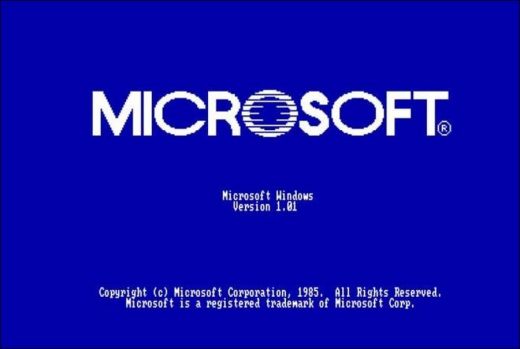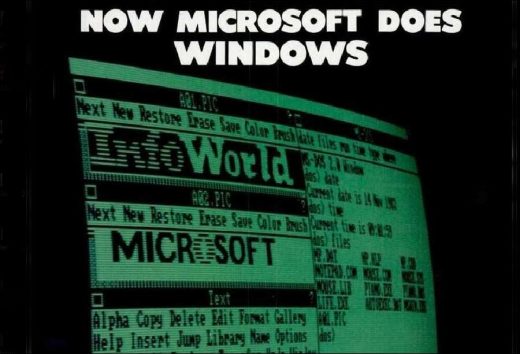The year was 1983. Microsoft was slowly becoming a well-known tech company in the PC space. Two years before, in 1981, Its MS-DOS operating system would be installed in the first IBM PC. It launched its first-word processing program, Word, earlier in 1983, along with its first Microsoft Mouse product. It even made Mac and PC hardware expansion cards.
However, 40 years ago today, on November 10, 1983 at a press event in New York City, Microsoft first revealed its plans to launch an all-new graphical user interface-based PC operating system. The company called the OS Windows.
Microsoft’s co-founder Bill Gates reportedly became interested in creating a GUI-based OS for PCs when he saw a demo for another early operating system with a similar design. Visi On, in 1983. In early 1983, Apple launched its Lisa computer with its own GUI, although at close to $10,000 (over $22,000 in today’s dollars) its price kept it out of most people’s hands. That seems to be a trend with many of Apple’s products, including a certain future device, but that’s a subject for another day.
Microsoft wanted to make a GUI operating system that would be far more affordable than competing software products. In an article from InfoWorld magazine that covered the initial announcement in New York City, the company stated it was targeting a price of between $100 and $250 for the OS. It also claimed that Windows would have relatively small hardware requirements. It claimed it would need an IBM-based PC with two floppy disk drives and 192K of RAM to operate.
Another big plus that Microsoft tried to push in its initial reveal was that Windows could also run any MS-DOS programs. In an article from Byte magazine in December 1983, it wrote.
Complete compatibility with MS-DOS means that Windows will at least let you run any application that runs under MS-DOS. In the worst case, Windows will turn the full display over to an MS-DOS application and return you to your place in Windows. “Language bindings” will enable programmers to write software for Microsoft Windows in any Microsoft programming language.
While Microsoft reportedly tried to have Windows applications overlap each other when more than one was running, the company eventually went to a tiled UI. That means applications would resize themselves to fit on the screen, but they would not overlap each other. InfoWorld’s article described it
In a tiling approach, the screen display is divided into columns, and the columns are broken into windows. Windows has a built-in “automatic window layout” feature that resizes all the windows when the size of any one window is altered so that the windows never overlap. When one window is placed on top of another window, the covered window is instantly transformed into a pictorial representation or icon, and dis-played at the base of the screen.
Microsoft said at the time of the official reveal that Windows would be supported by many IBM PC-based companies like HP, Compaq, Texas Instruments, and more. Oddly, IBM itself decided not to support Windows at the time of its official announcement. It later released an OS called TopView that failed, and then worked with Microsoft to launch OS/2 in the late 1980s (we may write about that some other day).
While Microsoft was hoping to launch Windows in April of 1984, the first version ended up shipping over two years after it was first announced in New York City, on November 20, 1985. After all that extra work and development, the operating system was a sales failure with just 500,000 units sold in its first two years. Indeed, it would take the release of Windows 3.0 in 1990 for the OS to become truly successful.
Visits: 114




